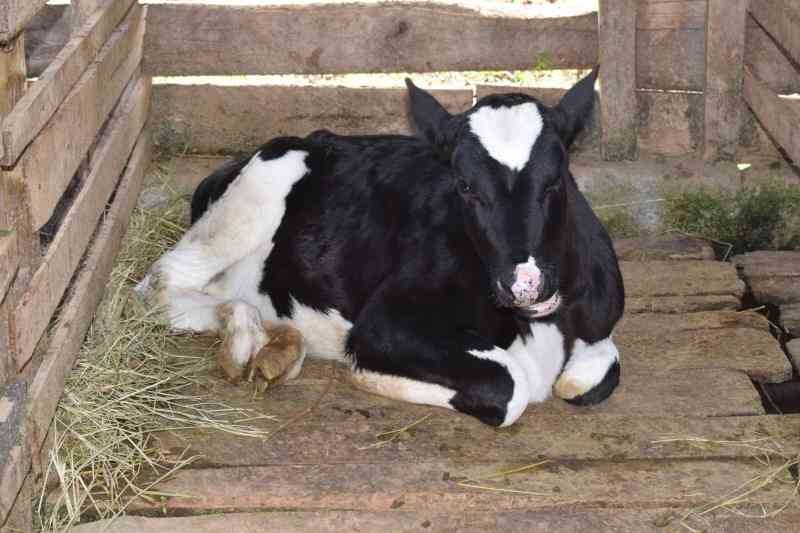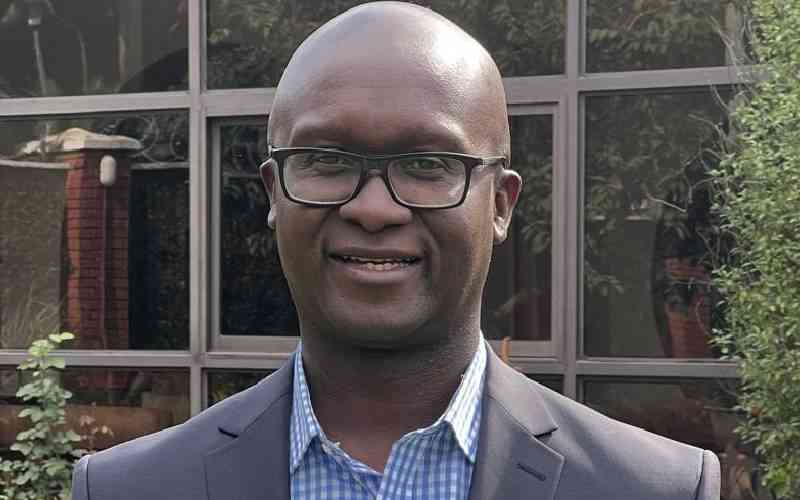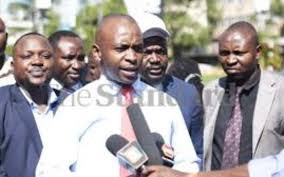 |
|
A policeman stands next to shells of cars torched during the Mpeketoni attacks. [PHOTO: FILE/STANDARD] |
MOMBASA, KENYA: The Coast region is going through another cycle of bloody violence, whose exact architects and reason, are still unclear. Huge parts of the Coast, including sections of key towns, are becoming lawless and ungovernable due to the rise of militia and terror groups.
The recent killing of 65 people, including one police officer, in Lamu County has deepened the mysterious raids and caught the police napping, leading to knee-jack reactions by security agencies.
Lamu has so far been hit thrice - in Mpeketoni town, Maporomoko and Kakateni villages. These attacks have heightened tension and sparked off a blame game among various players at the Coast.
The night attacks in Lamu were similar to the 2012 skirmishes in neighbouring Tana River, where about 100 people were killed, some of them police officers. The Coast also experienced violence in Likoni, Mombasa County, in August 1997, which claimed close to 100 people, including 10 police officers.
In addition to these unexplained clashes, the Coast has experienced sporadic attacks in recent years blamed by police on the Mombasa Republican Council (MRC), whose climax was the killing of security officers in Mombasa and Kilifi counties on the eve of the March 4, 2013 General Election.
Reacting to the latest raids in Lamu, Inspector General of Police David Kimaiyo said police camps would be established in troubled spots. Mr Kimaiyo warned that suspects would face serious charges.
“Suspects in these attacks will face charges of murder and destruction of property,” he warned.
But the Coast Interfaith Council of Clerics (CICC) said the attacks in Mpeketoni were more disturbing as signs show the attacks could have been carried out by a combination of al-Shabaab militia and locals. CICC chairman Father Wilybard Lagho said slow response by security agencies to such attacks was worrying residents.
HISTORICAL INJUSTICES
“There is need to build the capacity of the police service by professionalising and equipping it as well as improving the intelligence gathering unit,” Fr Lagho, who is also the Mombasa Catholic Holy Ghost Cathedral Vicar General, said.
The CICC, which brings together clerics from various faiths to foster peace and security at the Coast, said it was concerned that there were conflicting signals about who could be behind the Mpeketoni attacks.
According to Fr Lagho, apart from restoring the confidence of residents in the police to stem crime, solutions also lie in implementing the Truth, Justice and Reconciliation Commission (TJRC) report on historical land injustices and speeding up the issuance of title deeds at the Coast.
“The TJRC report and the recommendations of other commissions should be implemented to address the cycle of violence at the Coast,” Lagho said.
The CICC is however opposed to a recent pledge by Coast Parliamentary Group (CPG) to conduct a “peace campaign” in the region, saying it might heighten ethnic tensions. “I support reconciliation meetings but not political rallies. Political rallies will worsen the tensions and divisions,” Lagho said. Last week, Coast MPs led by CPG chairman and Kilifi North legislator Mr Gideon Mung’aro met President Uhuru Kenyatta in Nairobi and pledged to conduct peace rallies at the Coast following the Mpeketoni violence.
Stay informed. Subscribe to our newsletter
Maimuna Mwidau, a political expert, concurs with Lagho that the implementation of the TJRC report and issuance of title deeds would effectively address the cycles of bloody conflicts at the Coast. “The issue of land featured during the 1997 Likoni clashes and the subsequent skirmishes in Tana River. MRC also mentioned land. Addressing this problem can offer a lasting solution to the Coast region. The government should not wait until the 2017 electioneering year to issue some title deeds,” Mwidau said.
Apart from the TJRC, Mwiduau said there was need for the country to revisit the Justice Akiwumi report on Likoni clashes, the Judicial Report of Inquiry into the Tana River clashes and the Ndung’u and Njonjo land reports and ensure their recommendations are implemented.
MANY FACES
She urged CPG members to address legislation and push for the implementation of the commission reports instead of conducting political campaigns in the region.
The latest scope of violence in the region has been seen as more dangerous as it has an Islamist, separatist and often xenophobic component.
Hassan Mwakimako, a university lecturer, said although the Lamu conflict has had many faces, it was possible for terror group like the Al Shabaab to attack a place in which tension is brewing to cause conflicts.
“There has been reports that the building of Lamu port has caused an influx of people into the county and this may lead to tensions with those on the ground,” Dr Mwakimako said.
Abubakar Yusuf, a Mombasa lawyer, said disunity among various ethnic groups at the Coast and persistent claims of unaddressed historical land injustices could be fueling conflicts in the region.
“The problem is that the people have not aired their grievances in public and continue to harbour their frustrations. The TJRC provided the best opportunity for the Coast communities to say what they want,” Yusuf said.
The lawyer, who once represented the MRC, said the TJRC and Akiwumi commissions reports are critical in solving the conflicts.
But MRC Secretary General Hamza Randu claims the group has been wrongly linked to violent crimes at the Coast. “I condemn the Lamu attacks. They were not committed by MRC because the group has not been confrontational,” Randu said.
POLITICAL ASPIRATIONS
The TJRC report indicated that historical grievances over land constitute the single most important driver of conflicts and ethnic tension in Kenya. Close to 50 per cent of statements and memorandum received by the commission related to or touched on claims over land.
The report, which was released last year, recommended the implementation of the Justice Akiwumi report which called for prosecution of a powerful politician in the country. There has been concern that culprits implicated in the Likoni TJRC and Tana Delta reports have never been arrested or charged.
The Akiwumi team, which investigated the violence during the 1997 general election also identified land as having fueled the violence that saw the Likoni police station burnt down. On the other hand, the TJRC report warned that the dangerous mix of land-related claims with political aspirations of specific groups or individuals remains a powder keg that could ignite at any time.
In the Likoni clashes, then Kanu politician Karisa Maitha, who later become a powerful Cabinet minister in the Kibaki administration, was arrested and charged but later freed.
In the Tana Delta clashes, then Galole MP and assistant minister Major (Rtd) Samuel Dhadho Godhana was arraigned in court. An attack at Kilelengwani village in Tana River left 30 people dead.
The Tana Delta clashes pitted the Pokomo farmers against their pastoralist Orma neighbours in what appeared to be a fight over land.
 The Standard Group Plc is a
multi-media organization with investments in media platforms spanning newspaper
print operations, television, radio broadcasting, digital and online services. The
Standard Group is recognized as a leading multi-media house in Kenya with a key
influence in matters of national and international interest.
The Standard Group Plc is a
multi-media organization with investments in media platforms spanning newspaper
print operations, television, radio broadcasting, digital and online services. The
Standard Group is recognized as a leading multi-media house in Kenya with a key
influence in matters of national and international interest.
 The Standard Group Plc is a
multi-media organization with investments in media platforms spanning newspaper
print operations, television, radio broadcasting, digital and online services. The
Standard Group is recognized as a leading multi-media house in Kenya with a key
influence in matters of national and international interest.
The Standard Group Plc is a
multi-media organization with investments in media platforms spanning newspaper
print operations, television, radio broadcasting, digital and online services. The
Standard Group is recognized as a leading multi-media house in Kenya with a key
influence in matters of national and international interest.








